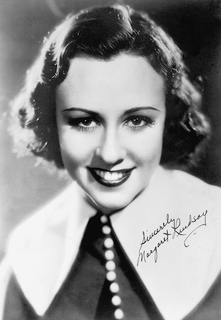
Margaret Lindsay from Dubuque got her break in movies starting in 1932 by perfecting a British accent and came to be known as “the girl who fooled Hollywood.” Photo courtesy of the Dubuque Telegraph-Herald
By John Skipper
A Dubuque girl with a classic British accent? C’mon!
But that perfectly-imitated accent, developed by a young actress looking for work, is what started Margaret Lindsay on an amazing film career that lasted three decades. She played mostly supporting roles in 88 movies that featured the likes of Bette Davis, Humphrey Bogart, James Cagney, Errol Flynn, John Wayne and Ronald Reagan, among many others.
When Lindsay was well established as a film star, newspaper articles referred to her as “the girl who fooled Hollywood” because of the British accent she perfected at the start of her career.
One of six children, Lindsay, whose real name was Margaret Kies, was born in Dubuque on Sept. 19, 1910, to John and Bertha “Bertie” Kies.
By her own admission, she was “kind of a tom-boy” in her younger years, loving to climb trees and to roller skate. She was a 1928 graduate of the Academy of The Visitation in Dubuque, a Catholic high school that had a circular sidewalk around the school that Lindsay often used as a roller rink. “I would go round and round until I got dizzy,” she told an interviewer.
Upon graduation from the academy, her father, a successful pharmacist, enrolled her in the National Park Seminary in Washington, D.C. She didn’t stay there long because Lindsay, who was smart, beautiful and ambitious, decided she wanted to be an actress. So she enrolled in the American Academy of Dramatic Arts in New York where she learned her craft and knew that being an actress was definitely her career choice.
But in the early 1930s, acting jobs were hard to come by for young women. Lindsay heard jobs were available in England so she decided to go there to finish her education and find work. Her challenge, of course, was that she wasn’t British — a definite obstacle for an actress seeking work in British films.
So she decided to become “British” — listening to how Brits talked to one another, discerning the emphasis they put on words and syllables as well as the pitch of their voices. Using the skills she had as an actress, Lindsay perfected a British accent, concocted a false but effective resume and began finding work in her new “homeland.”
“I was in stock in England and my business manager — an American too — simply thought it was expedient to take advantage of the fad for foreign actors and actresses (in America),” she said in an interview in her later years with the Dubuque Telegraph-Herald.
“So I became English and sailed for America,” she said, changing her last name to Lindsay at the suggestion of her manager because “Lindsay” had a bit of a British flavor to it.
Her first parts in American films were ones in which the roles called for a British actress, which eventually led to her reputation as “the girl who fooled Hollywood.”
She appeared in four films in 1932 before she got her big break in Hollywood in 1933, appearing in the Oscar-winning movie “Cavalcade” in which she played a British bride honeymooning on the Titanic. She signed a contract with Warner Brothers later that year and appeared in 36 movies in the next seven years, almost always as a supporting actress, before signing on with Universal.
TO READ THE ENTIRE STORY AND OTHER FASCINATING STORIES ABOUT IOWA HISTORY, subscribe to Iowa History Journal.
